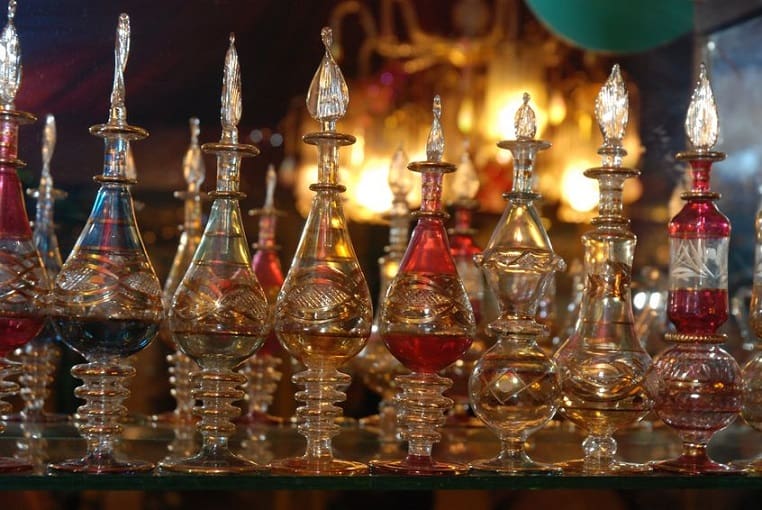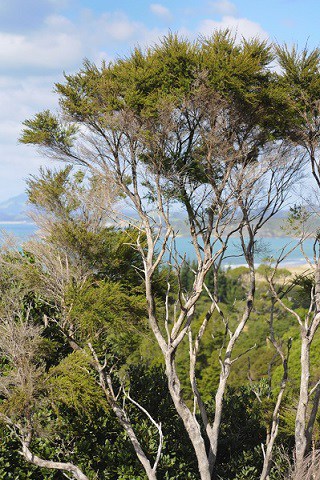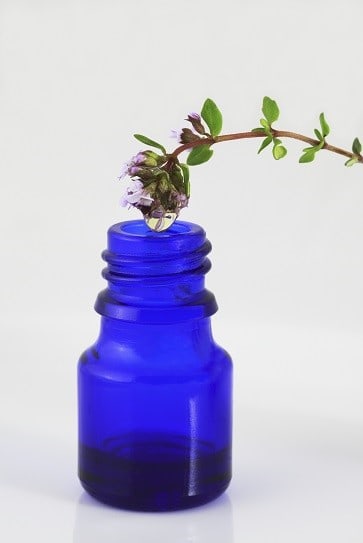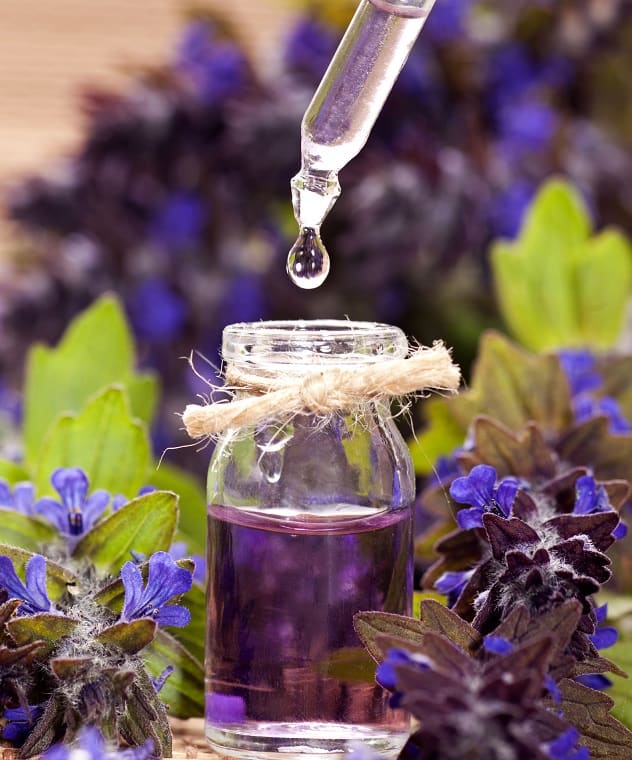 There’s no denying that essential oils have awesome acne powers hiding inside them. They’re far from panaceas, as the industry is notorious for multi level marketing, like the arguments that rose myrtle can revitalise your whirling inner chakras and rebalance your body and spirit. Religious elements are everywhere, while some dodgy dealers churn out more mundane unproven theories, like making your hair shinier.
There’s no denying that essential oils have awesome acne powers hiding inside them. They’re far from panaceas, as the industry is notorious for multi level marketing, like the arguments that rose myrtle can revitalise your whirling inner chakras and rebalance your body and spirit. Religious elements are everywhere, while some dodgy dealers churn out more mundane unproven theories, like making your hair shinier.
The fact is though, that if you stand in front of a carefully balanced 2 meter high triangle of essential oils in a health store (which a gust of wind will bring down the second the manager finishes assembling it), you’ve already found the cure for acne.
But which bottle is it? It’s like a fantasy book; choose the cursed bottle, and be cursed to sunlight sensitivity, or choose the correct, and gain eternally clear skin.
Luckily, we have a new study, released in November 2019. It compared 11 different essential oils, in an all out scramble to the top of the antibacterial pile.
PART 1: the experiment
Firstly, the scientists scouted the corridors of the Benha university hospital clinic in Egypt. They found 35 male and 20 female acne patients, aged just 17-25.
The scientists jabbed a hypodermic needle into their pimples, and extracted the contents. Because the bacteria was literally from acne patients, this is automatically representative of real acne cases. It isn’t frozen p.acnes taken from a biobank, and similarly, the young age range represents acne-covered teenagers perfectly.
The first target was propionibacterium acnes, the classic “acne bacteria” that everyone discusses. The other two were secondary players: staphylococcus aureus, famous for infecting hospital patients but also an inflammatory skin menace, and staphylococcus epidermidis, once strictly in the villain category, but recently discovered to kill p.acnes by fatally lowering its PH (full article here).
The bacteria were allowed to expand in a nutrient-rich petri dish (Bone-heart infusion). They were then treated with 11 different essential oils: Basil, Lemon, Tea Tree, Cinnamon, Rosemary, Cactus, Lavender, Thyme, Parsley, Lupine and Almond oil.
After 24 hours at human body temperature (37C), the inhibition zone was then measured, the diameter in millimetres (mm) surrounding the oil in which p.acnes was killed.
To measure bacteria death they used an evil scientist’s favourite tool: radiation. It was triphenyltetrazolium chloride, and ordinarily, bacteria reduce this yellow radioactive substance to its pink/red metabolite 1,3,5-triphenylformazan. This is easily detectable under a high strength microscope, thus showing how many bacteria cells survived. Using the third arm they grew made the experiment much easier (just joking).
Antibacterial properties are easily the most common power among essentials oils. Killing p.acnes, and therefore severing the chain between an unrestrained immune system and a fresh batch of pimples approximately one hour before you start a new school term.
PART 2: the results
Two essential oils towered over the rest. In fact, they were the only two oils that worked.
The winners of the antibacterial tournament were easily tea tree oil and rosemary oil.
For p.acnes, s.aureus, and s.epidermidis, tea tree oil created inhibition zones of 20.85mm, 15mm, and 21.02mm. Rosemary oil was right on its heels, carving out 14.77mm, 12.5mm and 15.18mm respectively.
Meanwhile, thyme oil, lavender oil and company failed to create any inhibition zone.
The minimum bactericidal concentration (MCB) was also tested, the quantity that stopped 100% of bacteria growth. Both tea tree oil and rosemary extract had an MBC against p.acnes of exactly 39mg/L. It’s strange how the figures were identical, but for s.aureus and s.epidermidis, tea tree oil bolted out in front again. The MBCs were 78mg for both, whereas for rosemary extract, they were 156mg for both, which is still an excellent result.
Similarly, tea tree oil killed all p.acnes in the petri dish in just 4 hours, in 200mg concentrations, versus a respectable 6 hours for rosemary extract.
For both tests, the 8 other essentials oils failed to achieve anything once again.
Juicy bonus details
 Interestingly, the p.acnes strain they tested (EG-AE1) was only detected in 42% of the patients.
Interestingly, the p.acnes strain they tested (EG-AE1) was only detected in 42% of the patients.
Everyone’s skin has some p.acnes, so this surprisingly low figure reconfirms how huge the variety is. S. epidermidis EG-AE2 was found in 21% percent of patients while s. aureus EG-AE2 reared its head in 37%. As we covered here, p.acnes group 1a is the worst for acne, whereas group 3 generally calms it.
Likewise, the p.acnes strain was also resistant to 6 common antibiotics. These included…
Clindamcyin – the most common topical antibiotic dermatologists prescribe, applied in creams.
Erythomcyin – the 1970s acne antibiotic, which is still used, but largely phased out in favour of clindamcyin.
Tetracycline – closely related to doxyclcyline, it’s a dermatologist’s favourite oral antibiotic, handed out like candy. For acne, tetracycline is always inadvisable. It drops a blanket of chemical warfare over your friendly gut bacteria strains.
The other three were Amikacin, Trimethoprim-sulfamethoxazole, and azithromycin. The two staphylococcus species were resistant to 8 antibiotics, also including Rifampin and penicillin-G.
The shadow of antibiotic resistance has been looming over clear skin civilisation for years, but this is a mini-update for 2020. For example, in 1979, 20% of p.acnes samples showed antibiotic resistance. By 2000, this had skyrocketed to 64%. In 2003, 664 acne sufferers in the UK, Greece, Spain, Sweden, Italy and Hungary displayed 50.8% to 93.6% resistance to antibiotics as a whole for p.acnes.
Who knows what has happened since then? Tetracyclines (oral) are generally less resistant than topicals like clindamcyin, but dermatologists are panicking. Studies constantly start with a preface that “antibiotic resistance is rising in the west”. Personally, I’d be glad for antibiotics to go down the drain (acne ones, anyway), but my worry is that it will drive an accutane resurgence.
Regardless, tea tree oil and rosemary oil can breach the defences that acne bacteria have constructed. Tea tree oil is already an antibacterial legend, but it just ticked another box. Two more boxes it could tick in the future are…
ONE – decreasing the biofilms that hold p.acnes in place, like the South African impepho twig.
TWO – deactivating lipases, bacterial enzymes which covert your oil into glycerin for their fuel, and produce inflammatory by-products. Impepho has this power again, as does topically applied lactobacillus bacteria.
Tea tree oil is now on a journey to become ultimate antibacterial topical treatment.
What about rosemary extract?
It’s a similar story: this Mediterranean plant growing by limestone seaside cliffs specialises in killing acne bacteria.
Rosemary oil can calm not only p.acnes, but the inflammation it produces in human skin. It slashes immune system chemicals triggered by bacteria like TNF-a, IL-6 and IL-1beta. That’s going one step further than a cute little battle in a petri dish.
Rosemary extract is particularly catastrophic for p.acnes’ structure. Its modus operandi is uncontrollable leakage of cytoplasm, rapid shedding of cells from the cell wall, and a distorted shape under the microscope.
The final stage of this process is death. The compounds behind the magic are rosmarinic acid, which seems to be p.acnes’ kryptonite, and carnosol.
Once again, rosemary extract just gained 5 points of acne-clearing power. Not every essential oil is incredible; one we’ve dismissed is the mediocre juniper berry oil.
A surprising result
 However, this study isn’t purely good news. In fact, it punches holes in a very old belief of ours.
However, this study isn’t purely good news. In fact, it punches holes in a very old belief of ours.
Previously, thyme oil looked like an almost unbeatable essential oil against p.acnes. A press release from the University Of Leeds caused a huge fuss in 2010, mostly because of its catchy title: “Thyme for a more natural cure for acne“. That man probably became the global head of the marketing industry, but the study itself was undeniably great: thyme oil inhibited p.acnes, and did so better than myyrh oil and marigold oil. It even outstripped the pharmaceutical bulldozer benzoyl peroxide.
We’ve always said that rose water specialises in decreasing immune system neutrophils. Cinnamon oil combats oily skin and malassezia yeasts, but thyme oil was always the bacterial bulldozer. This study sows the seeds of doubt.
The saviour is that the thyme oil wasn’t just weak; it didn’t impact p.acnes at all. It’s way too big of a difference be legitimate.
Perhaps the scientists acquired a dodgy batch? Maybe it had degraded in sunlight, maybe it was a rare nutritionless bottle (natural variation can’t be underestimated), or – whisper it – maybe the oil was fake. The oils were all acquired on Egyptian commercial markets, not the gold standard of reliability. Tea tree oil, for example, is constantly diluted with eucalyptus oil in corrupt Chinese factories.
Unlike with American beautyberry recently, where they prowled the forests of Georgia, USA, the scientists didn’t prepare the extracts themselves, with 100% precision.
Overall, thyme oil still holds the cards. The ultimate study will test 10 separate batches at once.
…and lavender oil?
 For this most debated of essential oils, the story is happier.
For this most debated of essential oils, the story is happier.
The controversy is over linalool and linalyl acetate, its signature compounds like rosmarinic acid in rosemary extract. Word on the street is that they’ll irritate your skin, but the problem is sunlight. Studies show that intact, unoxidised lavender oil kept in dark storage is perfectly safe.
Anyway, lavender oil’s signature acne gimmick has always been reducing neutrophils. Anti-inflammatory powers are fairly common, but targeting neutrophils is a rarity. These players in the immune system game generate free radicals to break down damaged tissue, but sometimes go so ballistic that they break down healthy tissue.
Therefore, even if the study is accurate, lavender oil is still in business.
But is the study accurate? I’m surprised again to see no inhibition whatsoever, because this 2010 study slashed p.acnes counts after 4 weeks in youths. Acne itself plummeted off a cliff too.
This study concluded that rose, thyme, lavender and cinnamon oil were the strongest against p.acnes of 10 tested. Note thyme oil’s reappearance. The two are identical: to go from promising inhibition to bouncing back in your face is very odd.
Lavender oil is notorious for fraud, with 35% of bottles estimated to be fake. Some bottles aren’t downright lab-borne, but use an inferior sub-variety called lavandin. This is a cross-hybrid between true lavender and the lavender spike, which lacks the raw biological properties. 10 times more lavandin is produced than lavender oil yearly.
Buying from the commercial market is a serious flaw. I wouldn’t be surprised if they really tested synthetic linalyl acetate mixed with pink food colouring diverted from the birthday cake industry.
The verdict
That said, we can’t sweep the failures under the carpet totally. It puts a minor dent in thyme oil and lavender oil, but I’d still be surprised if the experiment was 100% accurate.
On the happy side, the case for tea tree oil and rosemary extract just strengthened further.
Whether they’ll work depends on whether bacteria is truly your enemy. Every acne sufferer is different; you might have normal levels of p.acnes (you need some to combat yeast infections, via antimicrobial peptides they make), but a raging immune system that creates pimples from even the tiniest stimulation.
As bacteria doesn’t advertise, the only way forward is experimentation, in your top secret acne bunker. Oily skin is simple to spot, but bacteria and a hyperactive immune system manifest in the same way: inflammation. You probably have a combination of both, but with a mysterious ratio.
Regardless, for the antibacterial road to clear skin city, tea tree oil is getting stronger every day.
BONUS – a secret probiotic
Speaking of bacteria, topical bacteria might be the most rapidly evolving area of acne research right now.
In polite circles, there might be hushed breath after revealing this, but our body is full of microorganisms. Getting turned off by every creepy crawly is misguided. Bifidobacterium strains in our stomach produce serotonin, the happiness hormone – who could argue with that?
As for your skin, lactobacillus strains can pump out lactic acid which kills p.acnes. A company called AOBiome has a spray called Mother Dirt with ammonia oxidising soil bacteria inside it.
Hardcore Earthists advocate returning to our roots and rolling around in the dirt. Paleo people simply advocate eating organic vegetables like celery with traces of dirt on them, or not washing your hands so religiously after a gardening session. But there’s one strategy which you may already be fulfilling.
It comes with the advantage of a loyal companion, and of course, someone to fetch your newspaper in the morning. It’s a pet dog.
A 2013 study found that dog-loving households have a much more diverse bacterial flora than households without, particularly on pillowcases and sofas. 40 families tested 9 locations with a microbe swabbing sheet, including the kitchen cutting board, kitchen counter, and refrigerator shelf.
The connection to skincare? Children growing up with dogs have lower rates of troublesome food allergies, and most importantly, a 13-fold reduced risk of the eczema they cause (study). This even applied in children with a dog allergy. From ages 1 to 4, each child was tested for 17 different allergies.
Meanwhile, in 2013, 49 kids from doggy households had a 90% reduced risk of food allergies.
Could this translate to gloriously clear skin? Eczema has an inflammatory element, but victims also have lower strains of healthy gut bacteria, and supplementing with lactobacillus (found in yoghurt) can transform their skin (study).
Having three pet dogs might even explain your friend’s unusual resistance to acne. The slap in the face you feel when a totally clear-skinned guy eats frosted oatmeal for breakfast, never uses moisturiser, and changes his towel one a month. OK, that’s going too far, but you get the idea.
People have two views on bacteria. The first cry that they’re infected and immediately run to a sink frothing with soapy water and hand sanitiser. Look at it this way though – the bacteria are your own personal army, 10 trillion strong.
They’re working night and day to keep you fit and healthy, and better, you don’t have to command them. You can put your feet up and let them buzz away like ants in an anthill. And if your army gets out of line, you can hang the threat of antibacterial hand wash over their heads.
Thanks for reading!